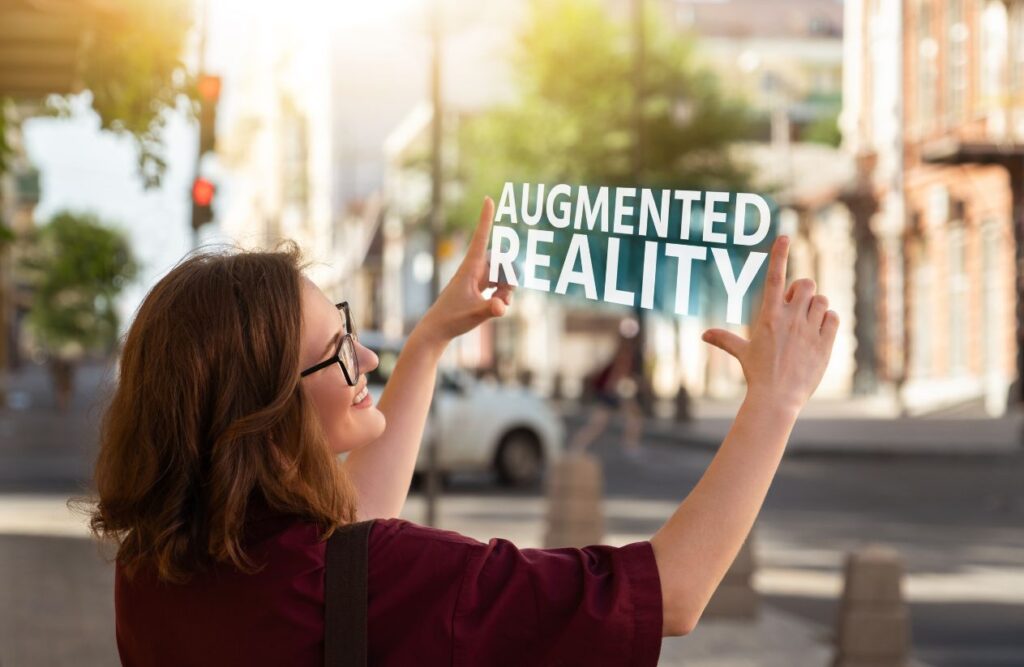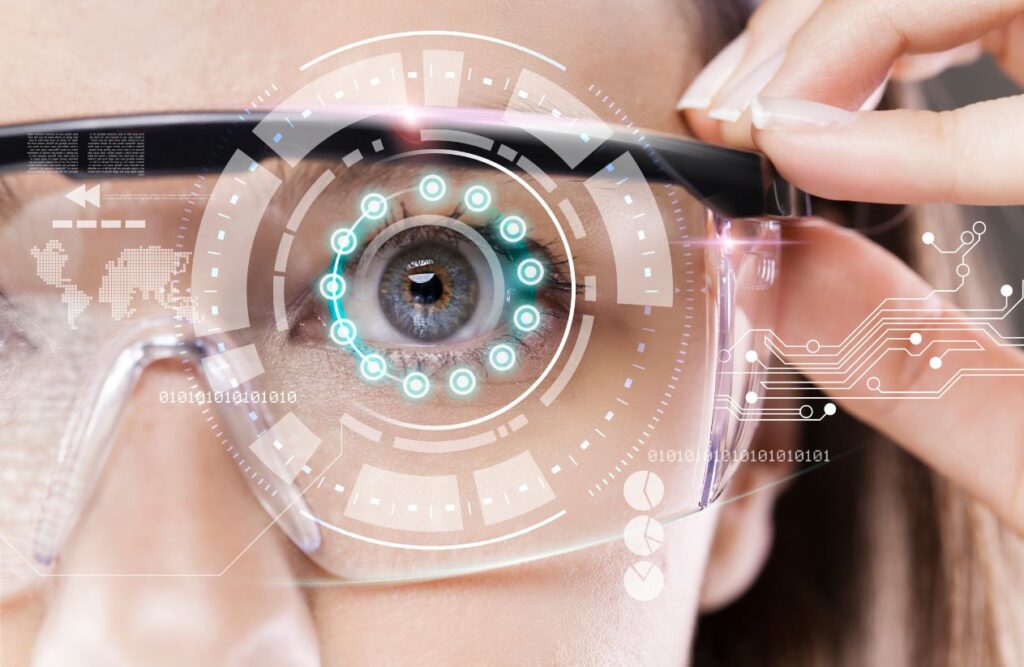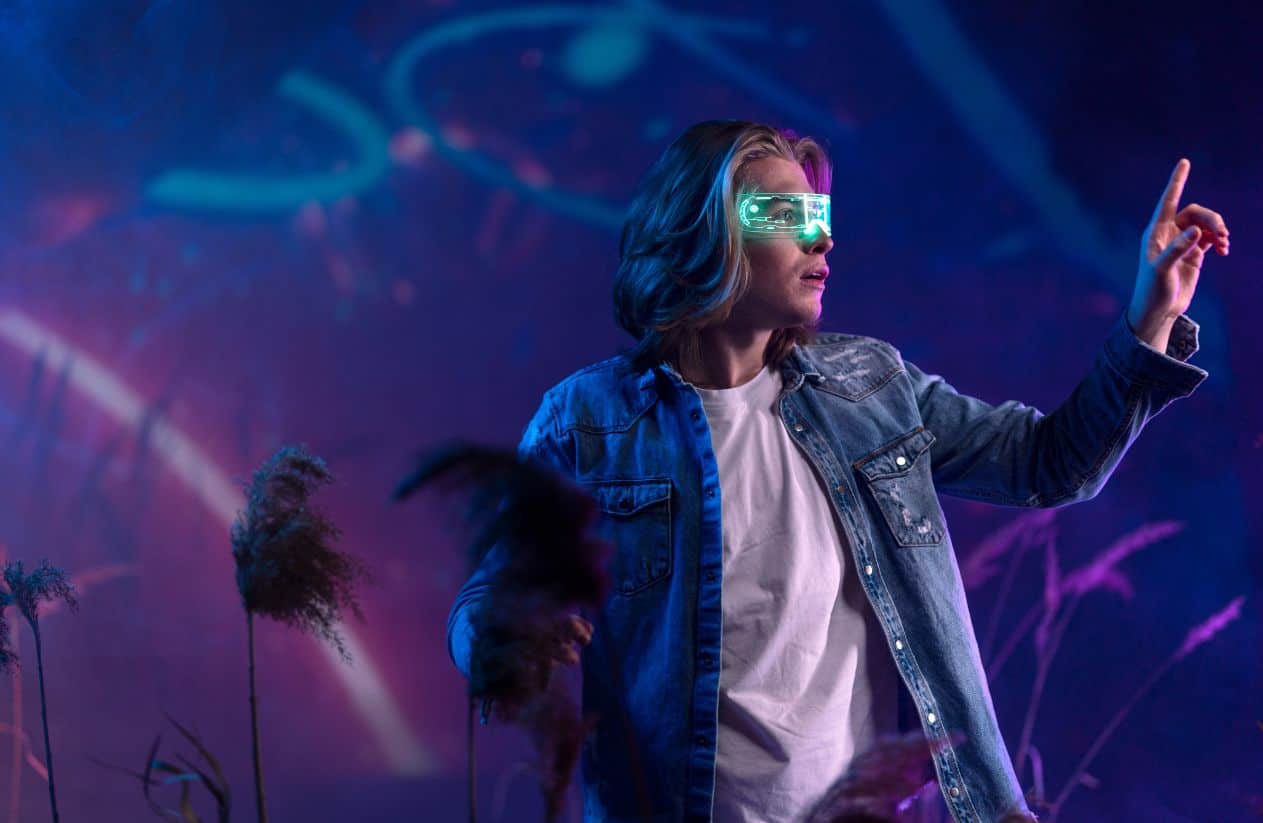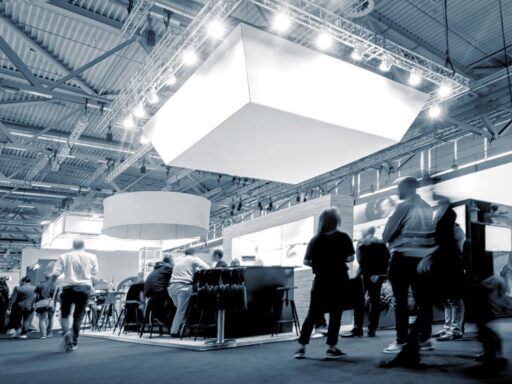Table of Contents
Embracing Augmented Reality: Why It Matters for Your Next Event

Augmented Reality (AR) is no longer a futuristic concept; it’s a pivotal tool that, when integrated into your events, can transform attendee experiences from mundane to extraordinary.
As an event planner invested in leveraging the latest technology, understanding why AR should be at the forefront of your planning process is crucial.
This technology merges digital elements with the real world, enhancing the way participants interact with your event space and content.
Creating Immersive Experiences
One of the primary reasons to incorporate AR into your events is its ability to create deeply immersive experiences.
Imagine attendees pointing their smartphones at a speaker’s podium to see a 3D model of a product being discussed, or using AR for interactive venue maps.
These applications of AR can make attendees feel more engaged and involved, turning passive listeners into active participants.
The potential for storytelling and brand engagement through these immersive experiences is virtually limitless, allowing you to craft memorable moments that resonate on a personal level.
Facilitating Networking and Interaction
In the context of networking, AR can bridge the gap between virtual and physical spaces in unprecedented ways.
For instance, AR-enabled business cards can allow people to share not just contact information but also links to portfolios, social media profiles, and more, all with a simple scan.
Similarly, AR can enhance product demonstrations, allowing attendees to explore features and functionalities in a hands-on manner without the need for physical prototypes.
This not only saves costs but also sparks conversations and connections among attendees based on shared interests and interactions.
Enhancing Learning and Engagement
Educational sessions and workshops stand to gain immensely from AR technology.
By overlaying digital information onto physical objects and environments, AR can make complex concepts easier to understand and more engaging.
This is particularly beneficial in technical fields where visualizing information can significantly enhance learning.
Moreover, incorporating AR into presentations and educational materials can cater to various learning styles, ensuring that your event offers value to all attendees.
Embracing AR in your next event is not just about keeping up with technology trends; it’s about redefining what it means to attend an event.
With the ability to create immersive experiences, facilitate meaningful interactions, and enhance learning, AR can elevate your event from good to unforgettable.
As you plan your next event, consider how AR could be integrated not just as a novelty, but as a core component of your event’s success.
How Augmented Reality Transforms Event Experiences: Insights for Organizers, Musicians, and DJs

Augmented Reality (AR) has emerged as a transformative tool in the realm of event planning and entertainment, offering unparalleled opportunities to enhance attendee engagement and create immersive experiences.
As technology continues to evolve, understanding how to effectively incorporate AR into event experiences can significantly benefit organizers, musicians, and DJs, ensuring that their events stand out in an increasingly competitive landscape.
Creating Immersive Environments with AR
One of the most compelling uses of AR in event planning is its ability to create highly immersive environments that captivate attendees.
By overlaying digital information onto the physical world, AR can transform ordinary spaces into extraordinary experiences.
For instance, imagine concertgoers witnessing a holographic performance by their favorite artist right before their eyes, or attendees navigating a conference with interactive 3D models related to the event’s theme.
Such applications not only enhance the visual appeal of an event but also engage participants on a deeper level, encouraging exploration and interaction.
For organizers looking to implement this technology, it starts with choosing the right AR platform and content that aligns with the event’s theme and audience expectations.
Collaboration with artists and technologists who specialize in AR can also help in creating unique and memorable experiences.
Personalizing Event Experiences
Another significant advantage of AR technology is its ability to personalize event experiences for each attendee.
Through AR-powered mobile apps, event-goers can receive tailored information and insights based on their preferences and interactions.
For musicians and DJs, this means being able to offer fans custom visual experiences that accompany a performance, such as AR filters that change with the music or interactive light shows that respond to audience movement.
This level of personalization not only enhances the attendee experience but also provides valuable data back to the organizers, who can use this information to improve future events.
Utilizing AR for personalization requires a deep understanding of your audience’s preferences and behaviors, as well as the technical capacity to collect and analyze event data.
Facilitating Networking and Social Interaction
AR also opens up new avenues for networking and social interaction at events. By integrating AR features into event apps, attendees can unlock special content, find common interests with others, and participate in interactive challenges and games.
This not only adds a fun and engaging layer to the event but also encourages attendees to connect with one another in meaningful ways.
For organizers, incorporating such interactive elements requires thoughtful planning and execution.
It’s important to design AR interactions that are intuitive and add value to the event experience.
Providing clear instructions and support can help ensure that attendees fully engage with the AR features and reap the benefits of enhanced networking opportunities.
In conclusion, augmented reality offers a plethora of opportunities for event professionals to innovate and create standout experiences.
By focusing on creating immersive environments, personalizing attendee experiences, and facilitating networking and social interaction, organizers, musicians, and DJs can leverage AR to elevate their events to new heights.
With the right strategy and execution, AR can transform any event into an unforgettable experience.
Step-by-Step Implementation: Integrating AR into Your Event Planning Process

Integrating augmented reality (AR) into your event planning process can seem daunting at first, but with the right steps, you can enhance your events, making them more immersive and engaging for attendees.
Here’s a straightforward guide to help you seamlessly incorporate AR into your next event.
Initial Conceptualization and Strategy
Begin by understanding the goals of your event and how AR can enhance the experience for attendees.
Are you looking to make your event more interactive, informative, or perhaps visually captivating? Defining clear objectives will help steer your AR integration in the right direction.
Next, brainstorm with your team or a technology partner about the kind of AR experiences that align with your event’s theme and goals.
This could range from AR invitations that give a sneak peek of the event innovatively, to interactive AR displays within the event space that provide attendees with a deeper understanding of your products or services.
Choosing the Right Technology and Partners
Selecting the appropriate AR technology and finding the right development partner are crucial steps.
There are numerous AR platforms available, each with its unique features and capabilities. Do your research to find one that matches your needs in terms of ease of use, scalability, compatibility with various devices, and overall quality of the AR experience.
It’s also essential to choose a partner or vendor with a proven track record in AR projects, especially in the event planning sector.
They can provide invaluable guidance from the initial design phase to the final implementation, ensuring your AR experience is both engaging and glitch-free.
Implementation and Testing
Once you’ve decided on the concept and technology, the next step is implementation.
Work closely with your technology partner to develop the AR content, whether it’s 3D models, interactive elements, or informational overlays.
Make sure the content is not only visually appealing but also adds value to the attendee’s experience. After the development phase, exhaustive testing is vital to ensure everything runs smoothly.
Test the AR features in various environments and on multiple devices to iron out any bugs and optimize performance. This phase is critical to ensure a seamless and enjoyable AR experience during the actual event.
Remember, the key to successfully integrating AR into your event planning process is to start with a clear strategy, select the right technology and partners, and thoroughly test the implementation before going live.
With these steps, you can elevate your events and create memorable experiences for all attendees.
Real-World Success Stories: How Events Are Winning with Augmented Reality

As a technology-savvy professional event planner, understanding the impact of Augmented Reality (AR) on the industry is crucial.
The real-world applications of AR in events have not only enhanced attendee engagement but also created immersive experiences that were previously unimaginable.
Here are some success stories demonstrating how events are embracing AR to captivate and awe their audiences.
Transformative Engagement at Music Festivals
One notable example of AR’s impact is seen at music festivals around the globe.
At Coachella, an annual music and arts festival in California, AR has been employed to create immersive experiences for festival-goers.
Through the festival’s mobile app, attendees could point their devices at stages and installations to unlock augmented reality overlays that added a digital dimension to the live performances and art displays.
This integration of AR transformed the way attendees interacted with the festival, elevating the sensory experience by blending digital art with real-world environments.
Interactive Product Launches
Product launches have also been revolutionized through AR, providing companies a platform to showcase their products interactively.
For instance, a leading automotive brand used AR to introduce its latest model.
Through an app, eventgoers could explore the car’s features, customize its colors, and even simulate driving experiences right from their smartphones.
This not only made the launch memorable but also allowed potential customers to engage deeply with the product in a fun and interactive environment.
Educational Workshops with Augmented Learning
The use of AR in educational workshops during conferences has shown significant improvements in learning outcomes and attendee engagement.
By incorporating AR elements into presentations, speakers can transform static images into 3D models that users can interact with, providing a more immersive and engaging learning experience.
For example, at a medical conference, AR was used to give attendees a closer look at complex surgical procedures without the need for physical models.
Participants could zoom in, rotate, and dissect virtual models, enriching their understanding and retention of the subject matter.
These real-world examples underscore the transformative potential of AR in the event planning and management space.
By offering unique, immersive experiences, AR not only enhances attendee engagement but also sets a new standard for how events are experienced.
As technology continues to evolve, the future of event planning with AR looks promising, offering endless possibilities for innovation and creativity.
Augmented Reality in Events- FAQs
Augmented Reality (AR) is rapidly transforming the landscape of event planning and execution, offering immersive and interactive experiences that captivate attendees like never before.
As an event professional, integrating AR into your events can seem daunting at first.
However, with a clear understanding and strategic approach, leveraging this innovative technology can set your events apart, making them more engaging, memorable, and impactful.
Below are some of the most frequently asked questions about incorporating augmented reality into events.
How Does Augmented Reality Enhance Event Experiences?
AR adds digital elements (holograms, 3D models, etc.) that viewers see overlaid on their real-world surroundings, usually through their phone. This makes presentations more exciting, exhibits more interactive, and the whole event more engaging. AR turns a space into a dynamic playground, promoting exploration and even social media sharing.
What Are the Key Considerations When Implementing AR in Events?
Start with your goal – more engagement, unique experiences, and educational tools? This guides what AR elements you’ll create. Consider technical needs (strong Wi-Fi, devices for guests). Budget matters – AR can be cost-effective, but custom experiences get pricier. Lastly, think about how tech-savvy your audience is, as this impacts how readily they’ll use the AR features.
Can AR Be Used in Both Virtual and Physical Events?
Definitely! At physical events, AR livens up posters, or the space itself, adding an element of surprise. In virtual or hybrid events, AR bridges the gap, making remote viewers feel more connected to the content. Virtual AR can even create shared networking spaces, fostering greater engagement.
Incorporating augmented reality into your event strategy can seem like a big step, but with the right planning and understanding, it can open up a world of possibilities for creating unforgettable experiences. As AR technology continues to evolve, staying informed and adaptable will ensure your events remain cutting-edge and highly engaging for your audience.






